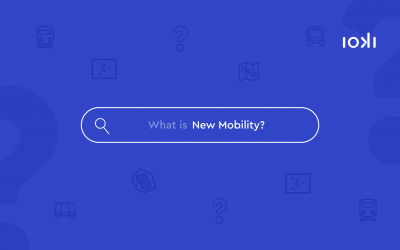Public transport must win over the older generation, particularly in terms of accessibility and barrier-free access. Short walking distances and a reliable service, even in rural areas, help to maintain mobility and thus quality of life. Low-barrier services such as low-floor vehicles, raised kerbs at stops and functioning lifts as well as sufficient space in the vehicle for walking aids and wheelchairs make travelling easier and safer. This applies not only to senior citizens, but also to other people with limited mobility. In addition to physical access, the availability of information on PT services and good signage are important factors for older people travelling by public transport.
The greatest lever in the transformation process is the active involvement of the user group. The city of Münster, the city of Hamburg and the district of Offenbach are leading the way: They all rely on clear, target group-orientated communication and demand-oriented services such as on-demand transport. Other adjustments included individual small changes such as more seating with armrests or better lighting in the evening. In addition, mobility advice centres provide support with everyday mobility and give senior citizens valuable tips on how to use buses, trains and the like.
These are particularly important when digital demand-responsive transport services come into play: Information events in neighbourhoods or senior citizen centres inform older people about how to use the new mobility services. Simple step-by-step instructions without technical terms on flyers or directly in the apps explain how to use them as simply as possible.
App providers can also do a lot to meet the needs of this target group. For example, the ioki Passenger App not only offers simple operation and in-app explanations, but also the option of taking wheelchairs or other walking aids with you. The algorithm in the background ensures that a suitable barrier-free vehicle takes over the ride request. Additional booking options by phone or via web browser also allow people to be mobile, who (still) feel unsure about using a smartphone.
The general rule is: The older generation does not categorically reject digital mobility services with smartphone use simply because they are not used to them. As long as the apps have a simple design, are easy to use and combined with training, nothing stands in the way of their use.
Andreas Maatz, Managing Director of the Kreisverkehrsgesellschaft Offenbach, summarises the advantages of on-demand transport for the older generation:
“[…] it is certainly not a luxury if we give older and sometimes frail people the opportunity to travel to the shops, the doctor or simply to meet up with other people using the comfortable DRT service “Hopper”. That is real participation. […] The concept of a new quality of life is repeatedly reflected in the feedback and letters of thanks we receive from these people. We should take this claim and our promise to the older generation seriously and act accordingly.”[1]
If the aspects and needs of older people are taken into account when planning transport in public spaces, getting older does not mean restricting mobility. On the contrary, such endeavours ensure freedom of movement for the generation and increase acceptance for further technology-based mobility services such as autonomous driving.
[1] Maatz, Andreas (2023): Ein On-Demand-Angebot im Reallabor. In: Tagesspiegel Background, https://background.tagesspiegel.de/mobilitaet/ein-on-demand-angebot-im-reallabor.



